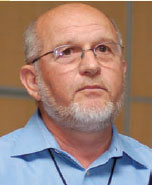 Immunity develops earlier in turkeys vaccinated for coccidiosis 
Development of immunity against
coccidiosis in turkeys varies markedly with
the type of control program and appears
to start earliest in birds that are vaccinated
against the disease, reported Dr. John
Radu, a technical service veterinarian with
Intervet/Schering-Plough Animal Health.
Subclinical coccidiosis can
not only lead to losses in
performance, it provides an
opportunity for secondary
intestinal diseases such as
necrotic enteritis.
Included in the analysis were flocks that
received either diclazuril, the chemical
anticoccidial; a combination of ionophore
anticoccidials; or a live coccidiosis
vaccine, which is becoming a more
common method of coccidiosis control
in US flocks. Vaccinated birds received
Coccivac-T, a live-oocyst vaccine
administered at day 1 that contains a
controlled dose of the four Eimeria
species that cause coccidiosis in turkeys.
Flocks receiving diclazuril developed immunity at 50 days of age (about 7 weeks of age). Birds on ionophore anticoccidials developed immunity earlier — by day 35 (5 weeks of age) — but did not appear to have complete immunity to E. meleagrimitis. Immunity against this coccidial species did not occur until later in the sampling period, from 56 to 84 days of age (8 to 12 weeks). Radu said it’s possible that E. meleagrimitis was less competitive with other coccidial species and cycled enough to initiate immunity only after the other species declined, he said. Birds that received Coccivac-T produced an oocyst-shedding pattern similar to that seen in birds treated with ionophores, but immunity occurred 1 week earlier, at 28 days or 4 weeks of age (see Table 1); in addition, oocyst counts were not as high as some of the counts found in birds that received ionophores, and immunity to E. meleagrimitis appeared to be more complete. There was no late cycling in the 8-to-12-week window, Radu said.  Table 1. Development of immunity in turkey flocks on various coccidiosis-control programs. *Immunity against E. meleagrimitis was incomplete until 8 to 12 weeks of age. The results not only demonstrated that
coccidiosis is present on turkey farms, they
showed that different coccidiosis-control
programs in commercial turkey flocks
produce markedly different coccidiosisimmunity
patterns, Radu said.
Back to North American Edition (#2) |








